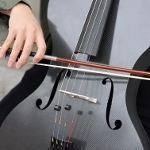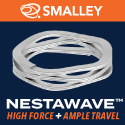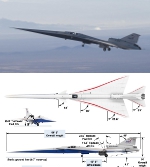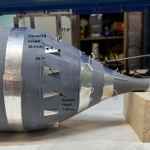Designfax – Technology for OEM Design Engineers was launched as an exclusive eMagazine in October 2005 following 25 successful years in print. Subscribers to the weekly publication (48 issues a year) are high-level OEM product design engineers and engineering managers who operate in a broad range of manufacturing industries, including automotive, aerospace, appliances, medical equipment, transportation, computer process controls, industrial equipment, and more. Primary content focuses on the latest exciting applications and products for Electrical/Electronic, Mechanical, Motion Control, Fluid Power, and Materials engineering, including articles on powerful software programs that serve as a primary engineering tool. Take a look at what Designfax offers and then subscribe.
| December 16, 2025 | Volume 21 Issue 47 |
|
 | Need Inserts? We make it E-Z.
E-Z LOK threaded inserts allow users to repair or reinforce threads without the need for special taps or installation tools. Our line of threaded inserts is used in metal, plastic, wood, composite and additive industries. Extensive inventories of standard products are available throughout the U.S., and we are also able to produce special threaded inserts to print or per application requirements. Our products are available through a variety of different channels depending on the volume needed.
FREE SAMPLES FOR STANDARD PRODUCTS.
Learn more
or contact Kyle Lindsly-Roach at 310.323.5613 x221. |
 | Merry Christmas and Happy Holidays
from Designfax!
2025 was another year overflowing with challenges for us all, but we made it. Congratulations! Thanks to all our readers, sponsors, writers, and article contributors. We wish you a healthy and happy holiday season!
Don't forget to pass along your issue of Designfax to an engineering colleague. We love new subscribers.
Please check out our sponsors every week. They make our publication possible. If you're looking to advertise, we can help with that too.
Go to the Designfax advertise page. |
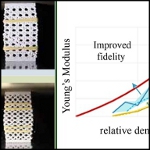 | Technique makes complex 3D-printed parts more reliable
MIT researchers have created a way for models to account for 3D printing's many limitations during the design process. In experiments, they showed their approach could be used to make products that perform much more closely to the way they're intended. Some 3D-printing shortcomings are addressed in this article that you may not be aware of.
Read the full article. |
 | Top Tech Tip: Optimize mechanical misalignments, get hidden benefits
C-Flex Couplings combine the best qualities of disc, beam, and bellows couplings in a unique and economical design. Made to couple two rotating shafts together, these couplings can accommodate large misalignments while transmitting high torque loads with zero backlash. Benefits include lower energy usage and less-frequent bearing failure. Constructed using high-strength hardened stainless steel or glass impregnated polyamide flexures, these couplings require no maintenance and provide years of trouble-free life, even in contaminated environments. Flexible Pivot Bearings and Super Plastic Torsional Damping Couplings also available.
See C-Flex Couplings handle misalignments.
Learn more and get all the specs and options. |
 | Neugart introduces new rack-and-pinion drive systems
Neugart's new fully integrated gearbox-pinion-rack offerings combine optimally matched components that enable powerful, dynamic, and precise power transmission. The racks are available with either straight or helical gearing and are made of induction-hardened and tempered steel. The integrated drive unit can be used in a wide variety of applications. Matching pinions are available for gearboxes of frame size 060 to 200. Lots of options.
Learn more. |
 | Ultra-long-distance proximity sensor: 4x distance detection
The ER series is the new, ultra-long-distance model line of proximity sensors from Keyence. It offers four times the detecting distance compared with conventional models, helping to reduce the risk of damage from impacts and abrasions. All-metal models provide even more protection. A full lineup of specialized models is available, including weld-resistant all-metal types with a ceramic coating that prevents spatter adhesion. Lots of other options.
Learn more. |
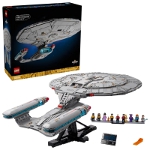 | LEGO's first Star Trek kit: Giant U.S.S. Enterprise
The new 3,600-piece LEGO Icons Star Trek: U.S.S. Enterprise NCC-1701-D kit allows fans to embark on a galactic voyage of creativity. The nearly 2-ft-long model of the iconic starship features a detachable command saucer, secondary hull, warp nacelles with distinctive red and blue detailing, and nine crew mini figures. This kit was so popular at its Black Friday release that it sold out immediately. LEGO has stepped up production, though, and you can reserve one on backorder with a March 2026 ship date.
Learn more. |
| | Videos+: Technologies and inspiration in action | Retaining rings and wave springs in aerospace applications
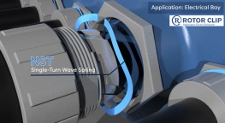 Rotor Clip retaining rings, spiral rings, and wave springs may be small, often hidden deep inside an aircraft, but they play a critical role in helping to keep you flying. These AS9100-Certified parts are engineered to endure extreme temps, vibration, and high-speed rotation, performing exactly as designed, flight after flight. From engines to control surfaces and fuel systems, these parts deliver reliable performance where it matters most. Lots of interesting applications here.
Rotor Clip retaining rings, spiral rings, and wave springs may be small, often hidden deep inside an aircraft, but they play a critical role in helping to keep you flying. These AS9100-Certified parts are engineered to endure extreme temps, vibration, and high-speed rotation, performing exactly as designed, flight after flight. From engines to control surfaces and fuel systems, these parts deliver reliable performance where it matters most. Lots of interesting applications here.
View the video and see these rings and springs in action. |
|
|
If you choose not to receive any more issues of Designfax, please follow this link
|




